By clicking a retailer link you consent to third-party cookies that track your onward journey. This enables W? to receive an affiliate commission if you make a purchase, which supports our mission to be the UK's consumer champion.
Do 'once a day' sun creams last all day?

Constantly reapplying sun cream when you're out and about can be a real chore, especially if you're trying to keep wriggly kids protected.
So it's not surprising that brands have sought to make life easier for us by developing hard-wearing, once-a-day sun creams.
Boots Soltan Kids Once and Calypso Once a Day are the brands we've found claiming to offer all-day protection.
They tend to be more expensive than standard sunscreen and claim to offer high and long-lasting protection, usually by forming a more resistant film on the skin than standard options.
But do once-a-day sunscreens really last all day? And should you rely on them? Our research, and the small print on the bottle, suggests that you may need to reapply more often than you think.
Sun cream reviews: see which products passed our independent SPF and UVA tests, and the ones to avoid
Once-a-day claims: the devil is in the small print
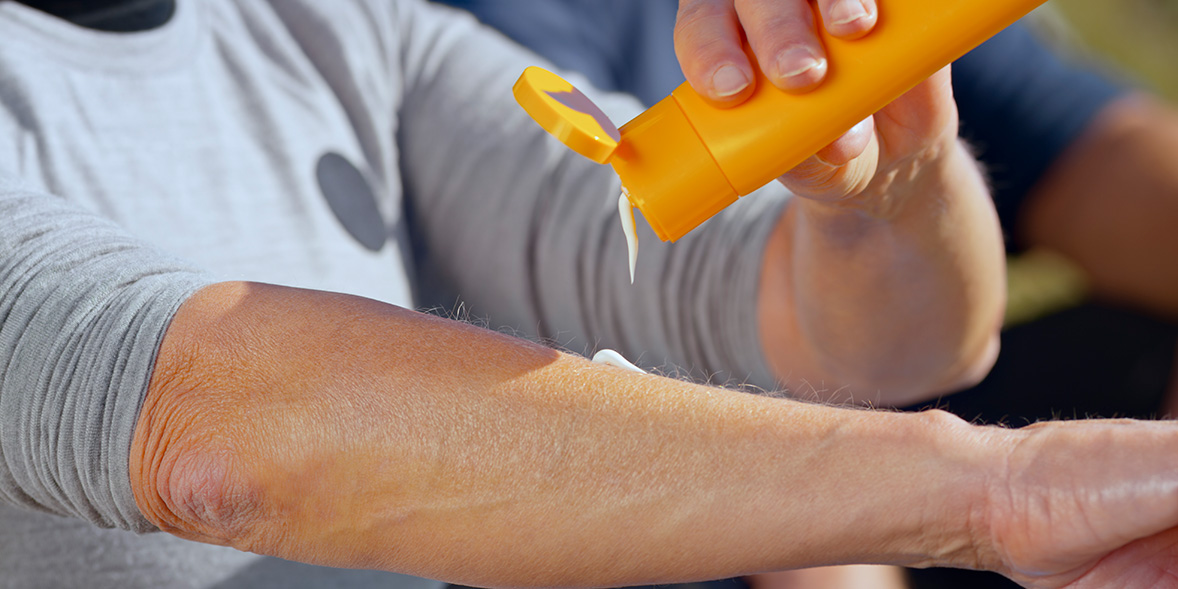
Applying sun cream just once before getting on with your day sounds really tempting.
But take a look at the small print on the back of the bottle and it becomes clear that these all-day protection claims come with a list of crucial caveats.
Sweating, swimming, towel drying or rubbing your skin on an abrasive surface can all impact protection levels and how the sunscreen lasts. All of this means that you’ll almost certainly need to apply more than just once a day, especially if you're out and about.
Brands aren’t allowed to make once-a-day claims on sunscreen in Australia due to concerns that they give people a false sense of security; however, there's no such restriction in the UK.
The EU recommendation on claims states 'no claim should be made that implies the following characteristics':
- 100% protection from UV radiation (such as ‘sunblock’, ‘sunblocker’ or ‘total protection’)
- No need to reapply the product under any circumstances (such as ‘all day prevention’).
The secret to healthy skin: listen to our Which? podcast on must-have skincare products and how to ensure you're getting enough protection
Once a day claims vs reality
Boots Soltan Once Advanced 8 Hour Protect, £13 for 200ml
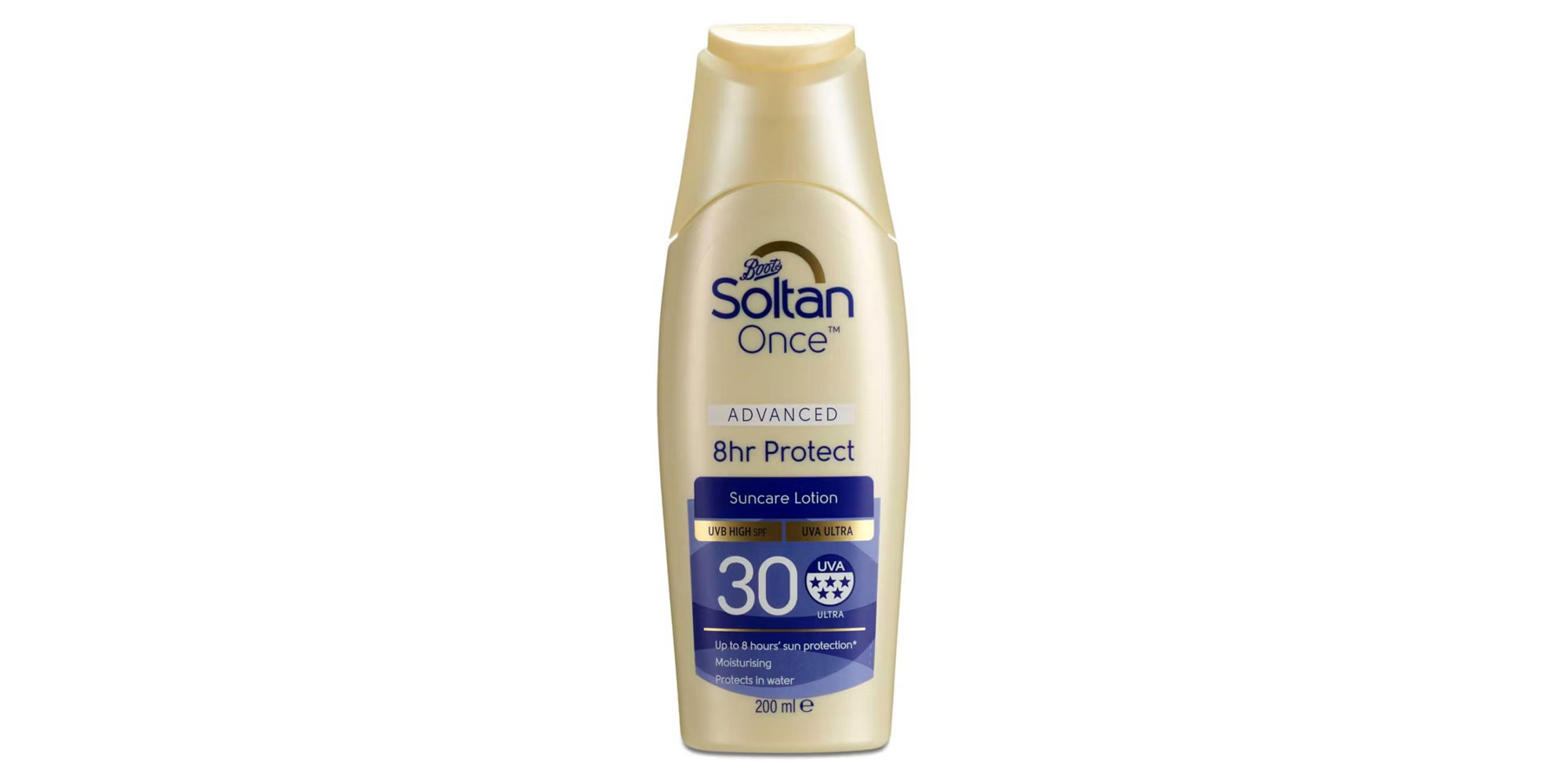
The Once Advanced Protect range costs around £13 for a regular-sized bottle or spray (200ml) – more than double the price of its £5.50 Soltan Protect & Moisturise range, which Boots says should be reapplied every one to two hours.
Formats and protection levels:
- Lotion
- Spray
- SPF15, 30 and 50+
Claims:
- 'One application allows for up to eight hours sun exposure', if applied as instructed
- Use in the water Up to 40 minutes of water exposure
The small print:
Back of pack instructions say you need to apply the sun cream generously 15 minutes before sun exposure and reapply after towel drying or 'coming into contact with an abrasive surface'.
Standard sunscreen alternative - we recommend:
- Boots Soltan Protect & Moisture Lotion SPF30, £5.50, available from Boots.com.
Boots Soltan Kids Once Protect & Play / Protect & Swim, £13 for 200ml
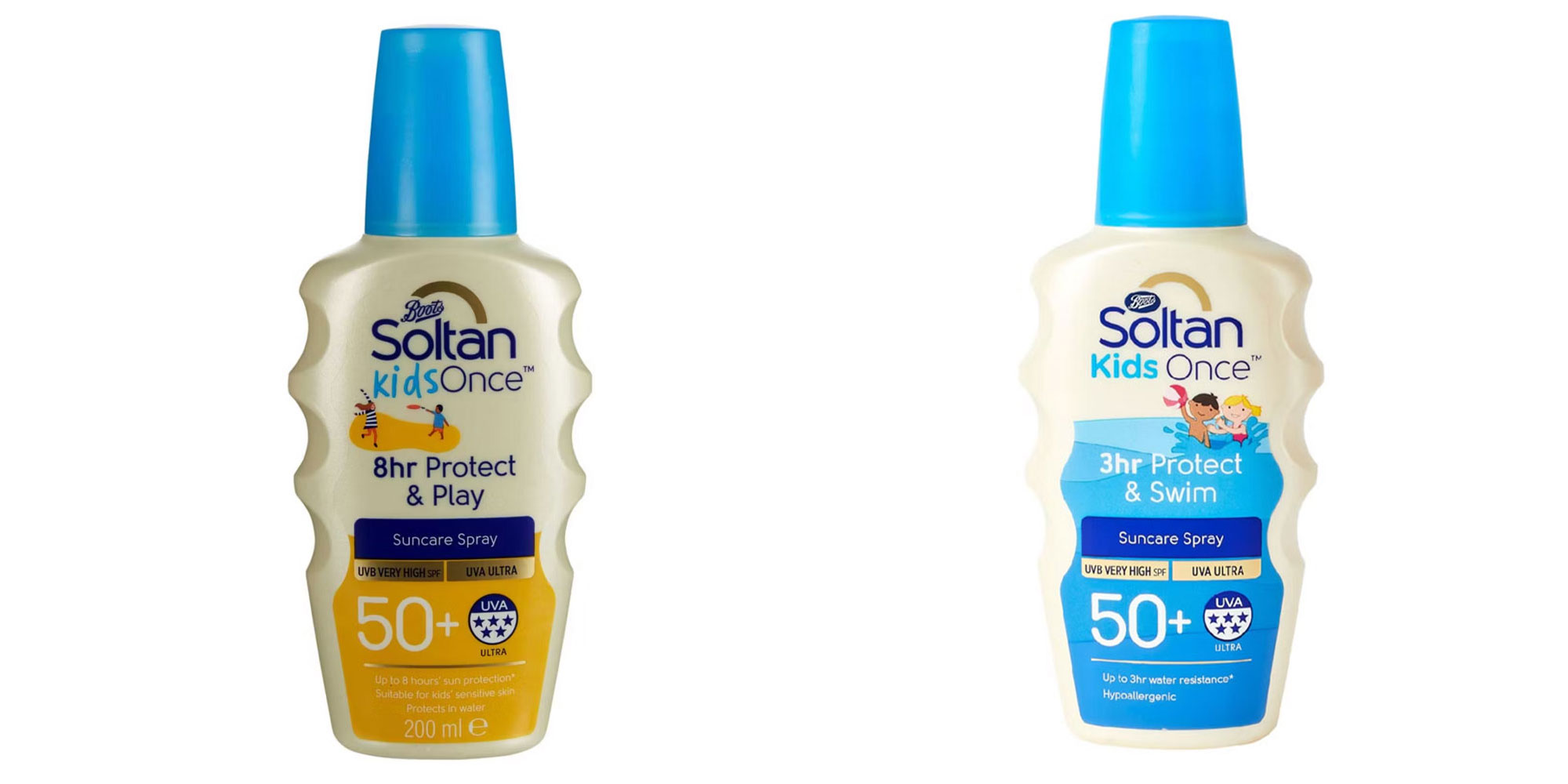
The kids' versions of the Boots Soltan Once range come in two versions, although both appear to offer the same level of protection as claimed.
Format and protection levels:
- Lotion
- Spray
- Roll-on (RRP £8)
- Trigger spray (RRP £16)
- SPF50+ only
Claims:
- 'One application allows for up to eight hours' sun exposure, if applied as instructed. This applies whether you opt for the Protect & Play or Protect & Swim (so there's no need to buy each type separately).
- Use in the water 'Up to three hours' water exposure
The small print:
Once again, the advice is to apply 15 minutes before going out in the sun, apply generously and reapply after towelling dry or other abrasive contact.
We asked Boots what counts as an abrasive surface, and it said rubbing wet skin with a towel would count, but that sunbathing on an abrasive surface (such as a towel, the sand or a sunbed) would not.
Standard sunscreen alternative - we recommend:
- Boots Soltan Kids Protect & Moisturise Lotion SPF50+, £5.50, available from Boots.com.
Calypso Once a Day, £10.99 for 200ml
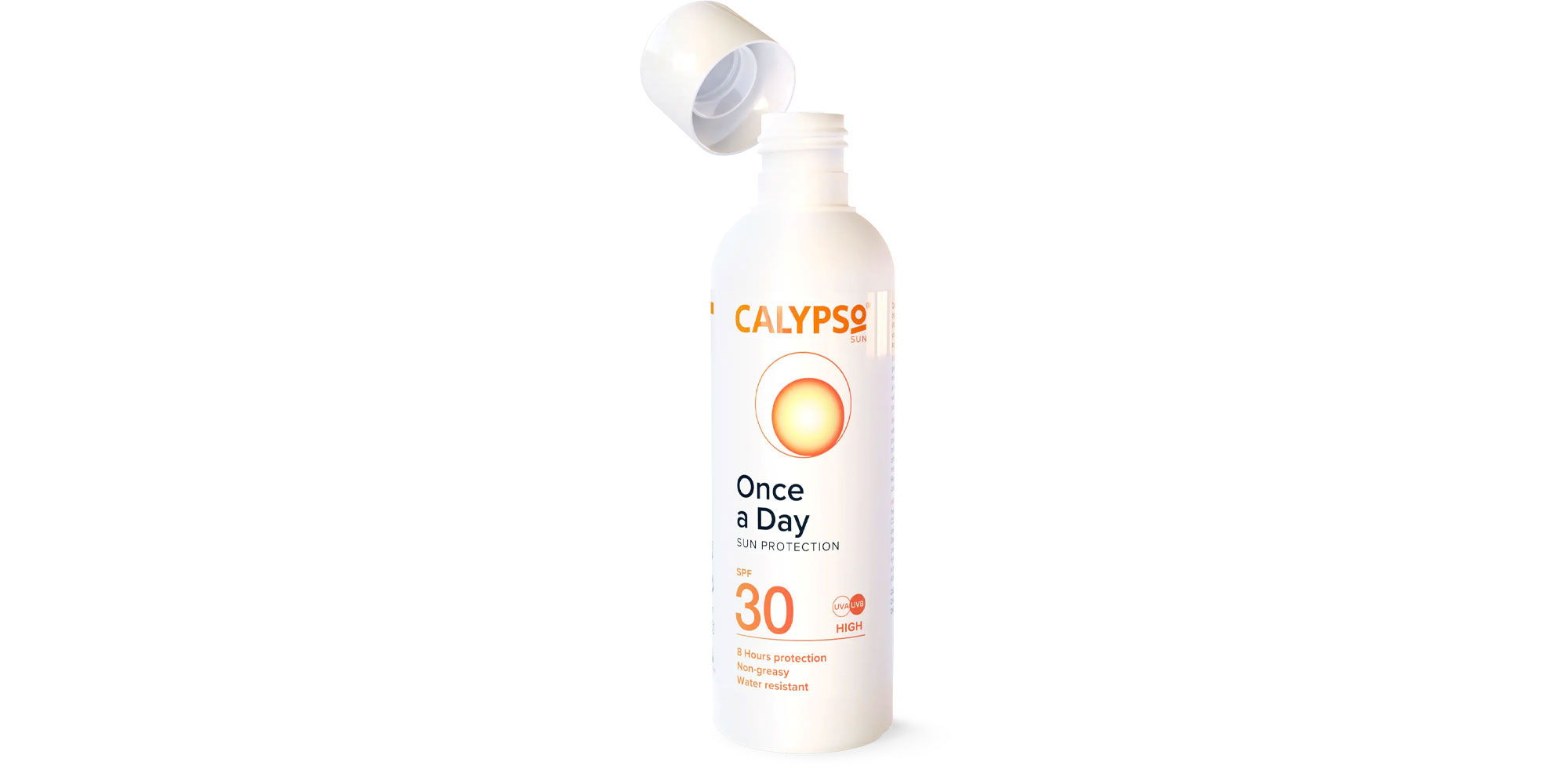
Format and protection levels:
- Lotion
- SPF30
Claims:
- 'All day long’ protection after one application
- Use in the water Calypso warns that even ‘water-resistant once-a-day sunscreens’ can still be washed off if you spend a long time in the water or if you dry yourself with a towel.
The small print:
Calypso says 'one correct application' will 'help to protect your skin all day long'.
On its website, it says you need to reapply after 40 minutes in the water, if you dry yourself with a towel or after ‘anything that involves rubbing your skin’.
Standard sunscreen alternative - we recommend:
- Garnier Ambre Solaire Sensitive Advanced Sun Spray SPF 50+, £8.00, available from Amazon.co.uk.
Calypso All School Day Long, £9.99 for 150ml
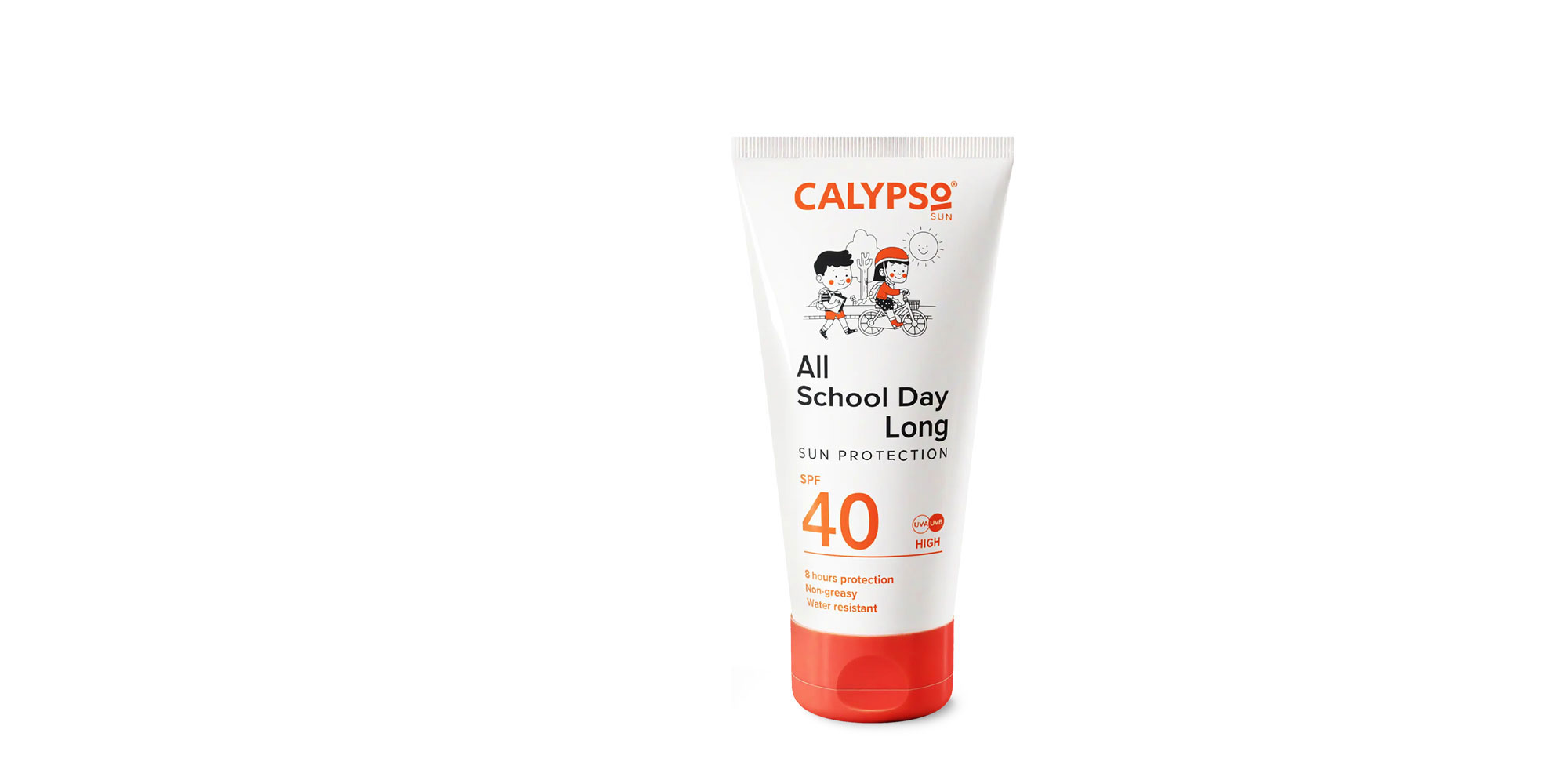
Format and protection levels:
- Cream
- SPF40
Claims:
- Provides 'long-lasting protection of up to eight hours'.
- Use in the water Calypso states it's water-resistant, but warns that even ‘water-resistant once-a-day sunscreens’ can still be washed off if you spend a long time in the water or if you dry yourself with a towel.
The small print:
Calypso says: 'Apply evenly and generously to clean, dry skin 15 minutes before sun exposure. Rub in well to allow the product to bind with your skin.'
It reminds customers that once-a-day sunscreens can still be washed off if you spend a long time in the water or if you dry yourself with a towel, and that you may need to reapply.
Standard sunscreen alternative - we recommend:
- Childs Farm SPF50+ Sun Cream Fragrance-Free, £12, available from Natural Baby Shower and Amazon.co.uk.
Sun cream buying guide: SPF, UVA and UVB explained, how to choose and the marketing jargon to watch out for
Why you should take care with once-a-day sunscreens

It's clear that there are plenty of conditions to fulfil to get the claimed protection from once-a-day products, which may be hard to achieve if you're out all day in the sun.
What's more, even if you follow all the rules, it's possible you won't get as much protection as you expect.
In 2016, Which? put several once-a-day sunscreens to the test, investigating how long they lasted on volunteers in a controlled lab experiment, and found they didn't offer nearly as much protection as claimed.
We tested products from Boots Soltan Once, Piz Buin and Riemann at the time, which were applied to the backs of volunteers, who then spent the day in the lab.
They were allowed to wear T-shirts and sit on a chair (we did this because if you lie on a sun lounger or towel, get sandy or wear a T-shirt on holiday, it’s possible that single-use sunscreen could be rubbed off over time).
After several hours we retested each sunscreen’s SPF and saw a shocking 74% average decrease in protection.
At the time, the Cosmetic, Toiletry & Perfumery Association (CTPA) criticised our use of T-shirts. But we stand by our testing, which we think reflects real-life use. We're concerned that once-a-day claims are still being made in 2025, despite the CTPA encouraging brands to move away from such wording.
What do the experts say about once-a-day claims?

The British Association of Dermatologists (BAD) says that frequent reapplication of sun cream is important, regardless of how long any product claims to give protection for.
Professor Brian Diffey from BAD, says: 'We recommend against relying on any sunscreen product for long periods without reapplication, whether advertised as an extended wear product, or not.
'Nobody applies sunscreen perfectly uniformly to all exposed skin, and it's inevitable that we will miss patches of skin. They also frequently under-apply and don't use the "one teaspoon per body part" rule to ensure you use enough product.
‘So, if you are only applying your sunscreen once a day, you are at risk of spending hours in the sun with little or no protection to those areas of skin that may have been missed or not had enough sun cream applied to them.
Over the course of a day, he added, 'swimming, drying, sweating, getting dressed and undressed' can cause sun cream to be wiped or washed away.
He also says that 'people can still use these types of sunscreens, but you should treat them like any other sunscreen, and reapply regularly'.

Since our 2016 investigation, the CTPA has advised brands to voluntarily stop making once-a-day claims and move towards using the word 'durable' instead.
However, while some brands, including Piz Buin and Riemann, have phased out the use of 'once a day' on packaging in the UK, others, such as Boots, have not.
The CTPA told us: 'For several years, CTPA and the UK cosmetics industry have been working to move away from using the descriptor of "once a day" products to the term "durable sunscreens", because these types of products have been formulated to stay on the skin longer while maintaining their level of sun protection.
'As we know, sunscreens need to be applied generously and reapplied frequently to maintain the protection, and it's important that the message to consumers about the importance of frequent reapplication is clear.
'Manufacturers of "extended wear" sunscreens will comply with the same safety and claim substantiation requirements as for "traditional" sunscreens, and will have carried out robust testing to specially developed protocols to ensure the product will provide the expected level of protection for the duration of the claim.
'As with all sunscreens, it's important to follow the instructions for application and use; and sunscreen shouldn't be used to intentionally stay longer in the sun. Sunscreen is just one part of a sun-safe regime.'
How to apply sun cream for maximum protection

BAD says that when using lotions, you should aim to apply at least six full teaspoons to cover the body of an average adult and should apply it at least 15 minutes before heading out in the sun so it can sink in.
The association estimates that most of us only apply half of this amount, which means we're often less protected than we think we are.
Professor Brian Diffey recommends 'applying sun cream like you would paint to a wall – you'd rarely just do one coat. Two coats of paint are almost always required for satisfactory coverage. In the same way, two coats of sunscreen may be required for adequate protection,' he said.
And after that, he adds, 'reapply at least every two hours, and immediately after swimming, sweating or towel drying.'
Avoid these common sunscreen mistakes: get our expert tips on common errors
Can I use once-a-day sun cream in the water?

Yes, you can, but you’ll also need to reapply frequently, just like you would if you were on the beach staying dry, and immediately after towel drying.
Professor Brian Diffey adds that sun creams generally offer ‘very good’ water resistance these days (although be aware water resistance claims also come with caveats, and the products we tested didn't hold up well to real-life conditions in our 2016 investigation), which is good if you're planning on spending time in the pool or in the sea. But over the course of the day, swimming will wash away some of the protection.
He says: ‘The regular reapplication advocated by most sunscreens protects us against this.'
To apply sun cream properly, you should:
- Apply a generous amount of sun cream – around one teaspoon per body part – at least 15 minutes before you go in the sun so it soaks in.
- Reapply sunscreen after swimming, sweating heavily, towel drying or rubbing your skin in a way that might cause the cream to rub off.
- Read the small print and the instructions so you're aware of the product's limitations.
- Pay attention to commonly missed or heavily exposed areas such as the head, nose, ears, eyelids, back of the neck, shoulders and around the edges of your swimwear.
Don't just rely on sunscreen, either; use clothing, hats and sunglasses to cover up, and seek shade, particularly when the sun is strongest, between 11am and 3pm, regardless of whether you're wearing sun cream.
Prices correct as of July 2025.




